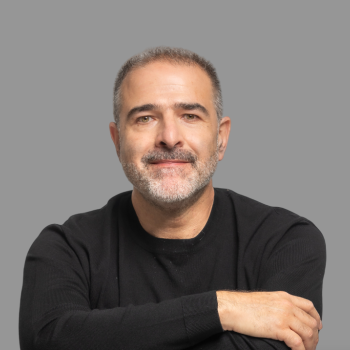It happens every day in our communities. Every day women make a very difficult decision about whether to keep their babies or not. However, instead of adoption many are choosing abortion. According to data from the Centers of Disease Control, every day approximately 1,788 pregnancies are ended by abortion.
What is abortion? What is the official Catholic Church teaching on abortion? Are there any circumstances where an abortion may be needed to save the life of the mother? These questions will be explored over the course of this article, but one thing is certain. Life is precious, and it is something that must be protected from the beginning of life to natural death.
In layman’s terms an abortion is the termination of a pregnancy before the time of gestation is complete. The question of life is one that is central to the topic. When does life begin? If life begins at conception, then life is there and must be protected. If life begins at some further point, then it stands to reason that terminating the pregnancy before that stated period is morally permissible. Then there are those who are just unsure when the fetus becomes a living being.
With abortion defined, that leads to the next question. What does the Catholic Church have to say about abortion? It may come as a surprise to some to learn that church has a lot to say about the topic. The church has defended life from its infancy. Regarding this the Didache states, “you shall not murder a child by abortion nor kill that which is begotten”.
Not a New Issue
The Didache is an ancient catechism in the church that dates back to the first century. The issue of abortion is nothing new, but an ongoing battle for the unborn. Also regarding abortion, the catechism states “Since the first century the Church has affirmed the moral evil of every procured abortion. This teaching has not changed and remains unchangeable. Direct abortion, that is to say, abortion willed either as an end or a means, is gravely contrary to the moral law” (CCC para 2271).
The church gets its teaching on the subject from sacred scripture as well as sacred tradition. Many places in scripture speak of God molding and creating life in the womb. What is conspicuous by its absence is any mention as to at how many weeks of gestation life begins. Sacred scripture makes it clear that it begins immediately. Life begins upon conception. One such verse is Jeremiah 1:5 which states, “Before I formed you in the womb I knew you, and before you were born I consecrated you; I appointed you a prophet to the nations”.
If God knew us before the womb, it makes sense that he knew us when we were immediately placed into the womb. To know is to imply a relationship, and one cannot have a relationship with something that is not alive. Since the embryo is a person upon conception it must be defended as any person should be (CCC para 2274)
The Official Teaching
Church teaching holds that abortion is intrinsically evil, and as such is never justified. The same can be said for many other things such as rape, torture, euthanasia, and kidnapping (Gaudiem et Spes para 27). Though an individual may have the best intentions, it does not justify an act that moral law and revelation have deemed evil.
That is because absolute truth and morality are incapable of being changed. Regarding this Saint Pope John Paul II writes, “If acts are intrinsically evil, a good intention or particular circumstances can diminish their evil, but they cannot remove it. They remain “irremediably” evil acts; per se and in themselves they are not capable of being ordered to God and to the good of the person” (Veritatis Splendor para 81).
Unfortunately, in today’s society, abortion is looked at like a basic human right. Opponents of church teaching give a variety of scenarios to support the need for an abortion. What if an abortion is needed to save the life of a mother? What if the mother had uterine cancer and the only treatment was to remove the uterus, and thus, killing the child in the process? These two examples may seem extreme, but they are ones often given by the pro-choice movement. There are others, but these two questions will be the focus.
When it comes to the life of the mother there are many cases written about by world renowned doctors who say the opposite. Dr. Collen Malloy wrote a letter to the editor of the Chicago Sun Times 2009 stating, “Abortion performed to “save” a mother’s life almost never — if ever — is necessary”. This same article cites a statement by Ireland’s board of Obstetricians which states, “there are no medical circumstances justifying direct abortion, that is, no circumstances in which the life of a mother may only be saved by directly terminating the life of her unborn child”.
A Matter of Intent
The word that sticks out very prominently in the last quotation cited is the word “directly”. This word is given in many church documents when they discuss abortion. It comes down to a matter of intent. Was it the intent to destroy the child in the womb, or was it the cause of something else? In their book Life Issues, Medical Choices the writers state, “It is never moral to intentionally kill an innocent human being in order to lower the likelihood of adverse effects for someone else” (Smith & Kaczor 37).
This begs the question asked earlier. What if a woman has uterine cancer and the only way to save her life is to remove the uterus? To further complicate things imagine she has a husband and four other children at home. This is truly a heart wrenching decision that must be made. She can forgo treatment and die, and the child in the womb may possibly live. Or she can have the treatment and live to take care of her four other children.
If she chooses to have the procedure it is not a direct attack on the child because it lacks intent. In situations such as this the principle of double effect becomes relevant. The reasoning for double effect requires the following four factors: “1. The act itself is not evil. 2. The evil is not a means to a good. 3. The evil is not intended as an end. 4. There is a proportionate reason for allowing the evil effect” (Smith & Kaczor 50). The first step is satisfied because having a hysterectomy is not evil. The second step is satisfied because the intent is not there.
The mother would much rather give birth to her child. The third step is satisfied as the surgery is not intended to end the life of the child. The forth step is satisfied because if she does not have the surgery she will die and leave her other four children without a mother. The intent is not to have an abortion to live, but her uterus must be removed to destroy the cancer that will inevitably kill her if she does nothing. There is an enormous difference between the two. It is the intent that is intrinsically evil according to Humana Vitae (Pinckaers 53).
Be Merciful
The above scenario is heartbreaking and does happen, but the moral teaching of the church deals with intent. One should consult their physician and spiritual director or priest to get the best well rounded advice for the situation. It is important to remember that these situations are highly emotional, and there is much pain and distress taking place. The same goes for those who may have had an abortion in the past and they realize the mistake they made.
We live in a fallen world, and we have all sinned. We all have some mortal sin that we have committed in the past. It is vital to not judge and to show mercy. In Matthew 5:7 our Lord says, “Blessed are the merciful, for they will receive mercy”. We have been forgiven much and have been shown limitless mercy. It is important to reciprocate it to those who are hurting because of their past mistakes. In the very beginning of sacred scripture we read, “So God created humankind in his image, in the image of God he created them; male and female he created them”.
We have all messed up, and no matter our past we are made in the image of God. As such, we are called to show everyone the dignity and respect that being made in his image calls for. To summarize we must do what the Lord says in the beatitudes. We must show mercy. In Hebrew, showing mercy is being compassionate (especially expressed by רחום): showing pity at another person’s sorrow or misfortune, with the desire to alleviate, or, on occasion, even to suffer in the other’s place. This is exactly what the Lord did for us when he suffered on the cross.
WORKS CITED
Kreeft, Peter & Tacelli, Ronald K. Handbook of Christian Apologetics. IVP Academic. Downers Grove, Il: 1994. Print.
Ostrowski, Thaddeus ed., Primary Source Readings in Christian Morality. Winona, MN: Saint Mary’s Press, 2008, Print.
Pinckaers, Servais. Morality: The Catholic View. St. Augustine’s Press. South Bend, IN: 2001. Print.
Smith, Janet E. & Kaczor, Christopher. Life Issues, Medical Choices: Questions and Answers for Catholics. Servant. Cincinatti, OH: 2016. Print













